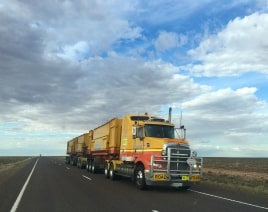Moving Companies in USA
To Find a Specific Moving Company Enter The Companies Name or DOT number below.
Simply Click a State From Below
Why Choose A Moving Company

So why opt for a moving company over a DIY alternative? For starters, hiring a moving company saves you from having to do any of the heavy lifting on moving day. This, in and of itself, is the most common reason why people choose to hire professional movers. Moving company pros know how to properly load and unload moving trucks, as well as how to move furniture without scratching the floors. Choosing a reputable and reliable moving company to handle your relocation only ensures that your move will be carried out in the most efficient way possible. It also frees up valuable time and energy that you can spend on other important to-do list items on your moving checklist.
Ready to Make a Move?

Ready to Make a Move?
Moving Authority is one of the largest moving directories for moving companies. Reviews are listed by firstly by state and then more granularly by city. They are sorted by most reviewed so you can get the best sense of the top ones while comparing moving companies.
No Matter The Distance, We Will Always Help You

LOCAL MOVING COMPANIES
Local movers take care of short distance moves (usually up to 100 miles) within the boundaries of the same state.

LONG-DISTANCE MOVING COMPANIES
Long distance moves are usually interstate moves, but intrastate relocations that exceed the distance of 100 miles

INTERNATIONAL MOVING COMPANIES
When moving from one country to another, you’re going to need the services of a moving company

COMMERCIAL MOVERS
Business relocation needs – moving a small office, a big corporation, a shop, a warehouse, etc. to a new address
Factors that Affect Moving Company Quotes

1. PACKING AND CRATING COSTS:
Remember, you’re paying your moving company for their time. Obviously, they’ll need more time if you ask them to pack your belongings. You can save money by packing some or all of your belongings yourself. You can cut costs further by disassembling large pieces of furniture rather than having the mover do it for you. Finally, you’ll pay more for specific kinds of packing and handling. For example, if items like artwork or a grandfather clock require crating, your cost will be higher.
2.POOR ACCESS TO YOUR PICK-UP OR DROP-OFF LOCATION:
If your current or future residence is in a location which prevents access for a large truck (for example, because of a narrow road or a weak bridge), your movers will need to find another way to get belongings out of your old home or into your new one. For example, they might need to use smaller vehicles to gain access. In this case, you’ll need to pay the mover a shuttle fee.
3. STAIRS OR LONG WALKING DISTANCES:
The cost of your move will also be higher if there are very long stairs (or multiple stairs) which they need to carry your belongings up or down. You might also have to pay a long-carry fee if the distance from the moving truck to the entrance of your residence is greater than 50 feet.
4. NARROW DOORS OR HALLWAYS:
If some of your items don’t fit through the door or down narrow hallways, a rigger might be needed to hoist them inside through a window. In this case, you could be assessed a hoisting fee.
5. STORAGE FEES:
This is one of the most common reasons for increased costs. If you need to store some or all of your belongings at the carrier’s warehouse because your new home is not ready to be occupied, you’ll need to pay an additional storage fee.
6. TIME OF YEAR:
Summer is the busiest moving time of the year, which means that moving in the summer will cost more. You can save money if it’s possible to time your move from September to May. You’ll also pay more if you move on a national holiday or on the first or last day of the month (this is because rental agreements typically expire at these times, which means more people move then).
Movers Comparison by State
Make movers comparison based on local moving companies reviews and consumer reports reviews. By selecting your state on this page, you can read about a moving company and also the customer’s testimonials, consumer reports and ratings. Find professional movers, whether they be piano movers, pool table movers or tractor trailer movers. Finding the best moving services can be a stressful task but we are here to help and protect the upcoming move of you or your loved one. Select the best mover for your price plan and service required. Finding the best mover is easy here. We are improving our reach though the industry and across the country.
When you need state to state movers
Moving Authority is a large database of state to state movers a as well. Finding a great interstate moving company is an easy task with Moving Authority. We've built the moving calculator which will give you an estimate of how much you would be paying such moves. All that is needed is to fill out the blue form on the right side of any page and you will be taken to an inventory tool which will let you enter all of your belongings and get estimated price.
Moving Tips, Tricks And Advice

Jul 07, 2015
HOW MUCH DOES THE AVERAGE MOVE COST IN THE U.S.A.?
Ever wondered how much does moving cost? According to a 2015 study done by Moving Authority, a typical professional done household move costs $8263. This study was conducted based on the stats below.

Jun 29, 2016
3 PACKING TIPS & 11 TIPS FOR AFTER THE MOVE
In order to get instant online moving quotes, you need to have all of your information on hand to provide to the moving company. Instant online moving quotes can be convenient, but it’s up to you to provide the details.

Jun 27, 2016
PROFESSIONAL MOVERS GUIDE AND TIPS
When moving to another office or moving your business elsewhere, allow Moving Authority to help you find the right moving company to cater to your needs. There is no reason why anyone in the midst of relocating should have to stress further by trying to find a company that's right for them.
Add Comment